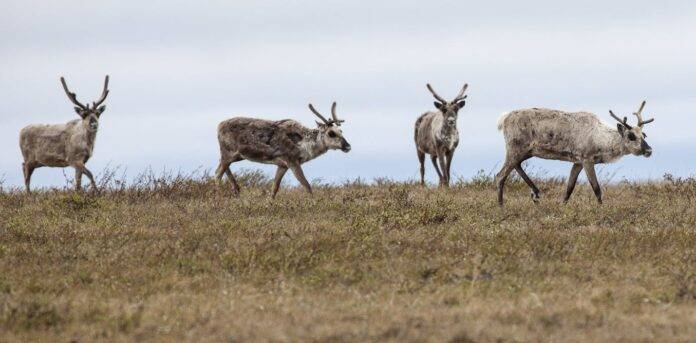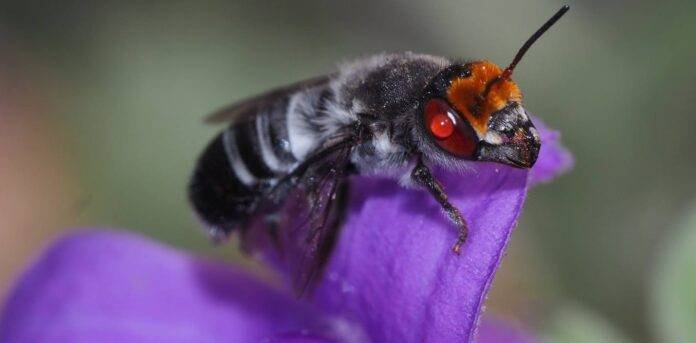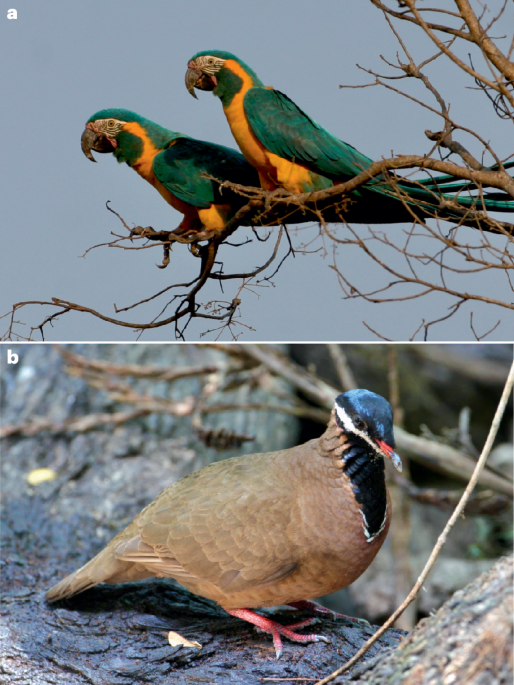Larcher, W. Physiological Plant Ecology: Ecophysiology and Stress Physiology of Functional Groups (Springer, 2003).
Crawford, R. M. M. Plants at the Margin Ecological Limits and Climate Change (Cambridge University Press, 2008).
Jackson, M. B. & Armstrong, W. Formation of aerenchyma and the processes of plant ventilation in relation to soil flooding and submergence. Plant Biol. 1, 274–287 (1999).
Dušek, J. Effect of rooting media on the proportion of rhizome cortex and central cylinder of Phalaris arundinacea. Biol. Bratisl. 57, 75–79 (2002).
Kozela, C. & Regan, S. How plants make tubes. Trends Plant Sci. 8, 159–164 (2003).
Evans, D. E. Aerenchyma formation: Tansley review. New Phytol. 161, 35–49 (2003).
Končalová, H. Anatomical adaptations to waterlogging in roots of wetland graminoids – limitations and drawbacks. Aquat. Bot. 38, 127–134 (1990).
Armstrong, W., Cousins, D., Armstrong, J., Turner, D. W. & Beckett, P. M. Oxygen distribution in wetland plant roots and permeability barriers to gas-exchange with the rhizosphere: a microelectrode and modelling study with Phragmites australis. Ann. Bot. 86, 687–703 (2000).
Faußer, A. C., Dušek, J., Čížková, H. & Kazda, M. Diurnal dynamics of oxygen and carbon dioxide concentrations in shoots and rhizomes of a perennial in a constructed wetland indicate down-regulation of below ground oxygen consumption. AoB Plants 8, plw025 (2016).
Dušek, J., Dařenová, E., Pavelka, M. & Marek, M. V. Methane and carbon dioxide release from wetland ecosystems. In Climate Change and Soil Interactions 509–553 (Elsevier, 2020).
Doležal, J. et al. Anatomical adaptations in aquatic and wetland dicot plants: Disentangling the environmental, morphological and evolutionary signals. Environ. Exp. Bot. 187, 104495 (2021).
Honissová, M. et al. Seasonal dynamics of biomass partitioning in a tall sedge, Carex acuta L.. Aquat. Bot. 125, 64–71 (2015).
Peach, M. & Zedler, J. B. How tussocks structure sedge meadow vegetation. Wetlands 26, 322–335 (2006).
Qi, Q. et al. Hydrological and microtopographic effects on community ecological characteristics of Carex schmidtii tussock wetland. Sci. Total Environ. 780, 146630 (2021).
Soukupová, L. Life strategy of graminoid populations in the wet meadows. In Freshwater Wetlands and their Sustainable Future. A Case Study of the Třeboň Basin Biosphere Reserve 255–267 (CRC Press, 2002).
Heywood, V. H. (ed.) Flowering Plants of the World (Oxford University Press, 1993).
van de Koppel, J. & Crain, C. M. Scale-dependent inhibition drives regular tussock spacing in a freshwater marsh. Am. Nat. 168, E136–E147 (2006).
Zhang, D. J., Qi, Q. & Tong, S. Z. Growth of carex tussocks as a response of flooding depth and tussock patterning and size in temperate sedge wetland, Northeast China. Russ. J. Ecol. 51, 144–150 (2020).
Costello, D. F. Tussock meadows in Southeastern Wisconsin. Bot. Gaz. 97, 610–648 (1936).
Crain, C. M. & Bertness, M. D. Community impacts of a tussock sedge: Is ecosystem engineering important in benign habitats?. Ecology 86, 2695–2704 (2005).
Lawrence, B. A. & Zedler, J. B. Carbon storage by Carex stricta Tussocks: A restorable ecosystem service?. Wetlands 33, 483–493 (2013).
Lawrence, B. A. & Zedler, J. B. Formation of tussocks by sedges: effects of hydroperiod and nutrients. Ecol. Appl. 21, 1745–1759 (2011).
Werner, K. J. & Zedler, J. B. How sedge meadow soils, microtopography, and vegetation respond to Sedimentation. Wetlands 22, 451–466 (2002).
Lawrence, B. A., Fahey, T. J. & Zedler, J. B. Root dynamics of Carex stricta-dominated tussock meadows. Plant Soil 364, 325–339 (2013).
Yu, F.-H., Krüsi, B., Schütz, M., Schneller, J. & Wildi, O. Is Vegetation inside Carex sempervirens tussocks highly specific or an image of the surrounding vegetation?. J. Veg. Sci. 17, 567–576 (2006).
Musilová, Z., Musil, P., Zouhar, J. & Polakova, S. Nest survival in the Reed Bunting Emberiza schoeniclus in fragmented wetland habitats: The effect of nest-site selection. Ornis Fenn. 91, 138–148 (2014).
Folliot, B., Caizergues, A., Barbotin, A. & Guillemain, M. Environmental and individual correlates of common pochard (Aythya ferina) nesting success. Eur. J. Wildl. Res. 63, 69 (2017).
Frieswyk, C. B., Johnston, C. A. & Zedler, J. B. Identifying and characterizing dominant plants as an indicator of community condition. J. Great Lakes Res. 33, 125–135 (2007).
Stovall, A. E. L., Diamond, J. S., Slesak, R. A., McLaughlin, D. L. & Shugart, H. Quantifying wetland microtopography with terrestrial laser scanning. Remote Sens. Environ. 232, 111271 (2019).
Vítková, J., Dušek, J., Stellner, S., Moulisová, L. & Čížkova, H. Effect of hummock-forming vegetation on methane emissions from a temperate sedge-grass marsh. Wetlands 37, 675–686 (2017).
Courtwright, J. & Findlay, S. E. G. Effects of microtopography on hydrology, physicochemistry, and vegetation in a tidal swamp of the Hudson river. Wetlands 31, 239–249 (2011).
Frei, S. & Fleckenstein, J. H. Representing effects of micro-topography on runoff generation and sub-surface flow patterns by using superficial rill/depression storage height variations. Environ. Model. Softw. 52, 5–18 (2014).
Frei, S. & Peiffer, S. Exposure times rather than residence times control redox transformation efficiencies in riparian wetlands. J. Hydrol. 543, 182–196 (2016).
Anderson, J. T. & Davis, C. A. Wetland Techniques Vol. 1: Foundations 46 (Springer, 2013).
Pirotti, F. Laser scanner applications in forest and environmental sciences. ItJRS https://doi.org/10.5721/ItJRS20124419 (2012).
Pirotti, F., Liang, X. & Chen, Q. Preface of special issue on laser scanning. Appl. Sci. https://doi.org/10.3390/app9132713 (2019).
Jozkow, G., Borkowski, A. & Kasprzak, M. Monitoring of fluvial transport in the mountain river bed using terrestrial laser scanning. Int. Arch. Photogramm. Remote Sens. Spatial Inf. Sci. https://doi.org/10.5194/isprsarchives-XLI-B7-523-2016 (2016).
Yang, Y. et al. Responses of the methanogenic pathway and fraction of CH4 oxidization in a flooded paddy soil to rice planting. Pedosphere 31, 859–871 (2021).
Telling, J., Lyda, A., Hartzell, P. & Glennie, C. Review of earth science research using terrestrial laser scanning. Earth Sci. Rev. 169, 35–68 (2017).
Jones, C. G., Lawton, J. H. & Shachak, M. Organisms as ecosystem engineers. In Ecosystem Management (eds Samson, F. B. & Knopf, F. L.) 130–147 (Springer, 1994).
Jones, C. G., Lawton, J. H. & Shachak, M. Positive and negative effect of organisms as physical ecosystem engineers. Ecology 78, 1946–1957 (1997).
Hannam, M. & Moskal, L. Terrestrial laser scanning reveals seagrass microhabitat structure on a tideflat. Remote Sens. 7, 3037–3055 (2015).
Liang, X. et al. Terrestrial laser scanning in forest inventories. ISPRS J. Photogramm. Remote. Sens. 115, 63–77 (2016).
Calders, K. et al. Terrestrial laser scanning in forest ecology: Expanding the horizon. Remote Sens. Environ. 251, 112102 (2020).
Koma, Z. et al. Quantifying 3D vegetation structure in wetlands using differently measured airborne laser scanning data. Ecol. Ind. 127, 107752 (2021).
Toivonen, J., Kangas, A., Maltamo, M., Kukkonen, M. & Packalen, P. Assessing biodiversity using forest structure indicators based on airborne laser scanning data. For. Ecol. Manag. 546, 121376 (2023).
Penman, S., Lentini, P., Law, B. & York, A. An instructional workflow for using terrestrial laser scanning (TLS) to quantify vegetation structure for wildlife studies. For. Ecol. Manag. 548, 121405 (2023).
Vauhkonen, J. & Imponen, J. Unsupervised classification of airborne laser scanning data to locate potential wildlife habitats for forest management planning. For. Int. J. For. Res. 89, 350–363 (2016).
Koma, Z., Seijmonsbergen, A. C. & Kissling, W. D. Classifying wetland-related land cover types and habitats using fine-scale lidar metrics derived from country-wide airborne laser scanning. Remote Sens. Ecol. Conserv. 7, 80–96 (2021).
Yang, C.-J., Jen, C.-H., Cheng, Y.-C. & Lin, J.-C. Quantification of mudcracks-driven erosion using terrestrial laser scanning in laboratory runoff experiment. Geomorphology 375, 107527 (2021).
Müller, J. & Vierling, K. Assessing biodiversity by airborne laser scanning. In Forestry Applications of Airborne Laser Scanning: Concepts and Case Studies (eds Maltamo, M. et al.) 357–374 (Springer, 2014).
Koarai, M. Landscape ecological mapping for biodiversity evaluation using airborne laser scanning data. In Monitoring and Modeling of Global Changes: A Geomatics Perspective (eds Li, J. & Yang, X.) 137–154 (Springer, 2015).
Guimarães-Steinicke, C. et al. Chapter four—Terrestrial laser scanning reveals temporal changes in biodiversity mechanisms driving grassland productivity. In Advances in Ecological Research (eds Eisenhauer, N. et al.) 133–161 (Academic Press, 2019).
Stereńczak, K. et al. Global airborne laser scanning data providers database (GlobALS)—A new tool for monitoring ecosystems and biodiversity. Remote Sens. 12, 1877 (2020).
Lee, H.-J., Yang, S.-R. & Lee, K.-M. Ecological restoration monitoring of open-pit mines using airborne laser scanning. J. Korean Soc. Geospat. Inf. Sci. 16, 101–107 (2008).
Zlinszky, A., Mücke, W., Lehner, H., Briese, C. & Pfeifer, N. Categorizing wetland vegetation by airborne laser scanning on Lake Balaton and Kis-Balaton, Hungary. Remote Sens. 4, 1617–1650 (2012).
Cordell, S. et al. Remote sensing for restoration planning: how the big picture can inform stakeholders. Restor. Ecol. 25, S147–S154 (2017).
Levick, D. S. R. Monitoring Mangrove Rehabilitation with Terrestrial Laser Scanning (CSIRO, 2021).
Camarretta, N. et al. Handheld laser scanning detects spatiotemporal differences in the development of structural traits among species in restoration plantings. Remote Sens. 13, 1706 (2021).
Valkama, E., Lyytinen, S. & Koricheva, J. The impact of reed management on wildlife: A meta-analytical review of European studies. Biol. Cons. 141, 364–374 (2008).
Gray, M. J., Chamberlain, M. J., Buehler, D. A. & Sutton, W. B. Wetland WILDLIFE MONITORING AND ASSESSMENT. In Wetland Techniques (eds Anderson, J. T. & Davis, C. A.) 265–318 (Springer, 2013).
Helle, P., Ikonen, K. & Kantola, A. Wildlife monitoring in Finland: online information for game administration, hunters, and the wider public. Can. J. For. Res. 46, 1491–1496 (2016).
Shokirov S, Levick SR, Jucker T, Yeoh P, Youngentob K 2020 Comparison of TLS and ULS Data for Wildlife Habitat Assessments in Temperate Woodlands. In IGARSS 2020-2020 IEEE International Geoscience and Remote Sensing, 6097–6100. https://doi.org/10.1109/IGARSS39084.2020.9323451.
Riegel, J. B., Bernhardt, E. & Swenson, J. Estimating above-ground carbon biomass in a newly restored coastal plain wetland using remote sensing. PLoS ONE 8, e68251 (2013).
Olsoy, P. J., Glenn, N. F. & Clark, P. E. Estimating sagebrush biomass using terrestrial laser scanning. Rangel. Ecol. Manag. 67, 224–228 (2014).
Hopkinson, C. et al. Monitoring boreal forest biomass and carbon storage change by integrating airborne laser scanning, biometry and eddy covariance data. Remote Sens. Environ. 181, 82–95 (2016).
Owers, C. J., Rogers, K. & Woodroffe, C. D. Terrestrial laser scanning to quantify above-ground biomass of structurally complex coastal wetland vegetation. Estuar. Coast. Shelf Sci. 204, 164–176 (2018).
Melo, A. M. et al. Monitoring the understory in eucalyptus plantations using airborne laser scanning. Sci. Agric. 78, e20190134 (2020).
Li, S. et al. Harnessing terrestrial laser scanning to predict understory biomass in temperate mixed forests. Ecol. Ind. 121, 107011 (2021).
Brede, B. et al. Non-destructive estimation of individual tree biomass: Allometric models, terrestrial and UAV laser scanning. Remote Sens. Environ. 280, 113180 (2022).
Mirtl, M. Introducing the next generation of ecosystem research in Europe: LTER-Europe’s multi-functional and multi-scale approach. In Long-Term Ecological Research (eds Müller, F. et al.) 75–93 (Springer, 2010).
Dušek, J., Hudecová, Š & Stellner, S. Extreme precipitation and long-term precipitation changes in a Central European sedge-grass marsh in the context of flood occurrence. Hydrol. Sci. J. 62, 1796–1808 (2017).
Mejdová, M., Dušek, J., Foltýnová, L., Macálková, L. & Čížková, H. Photosynthetic parameters of a sedge-grass marsh as a big-leaf: effect of plant species composition. Sci. Rep. 11, 3723 (2021).
Landucci, F. et al. Classification of the European marsh vegetation (Phragmito-Magnocaricetea ) to the association level. Appl. Veg. Sci. 23, 297–316 (2020).
Holubičková, B. Příspěvek ke studiu rašeliništní vegetace. I. Mokré louky u Třeboně (A contribution to the study of peatland vegetation. I. Mokré louky near Třeboň). Proceedings of the University of Agriculture in Prague 1959, 257–285 (1959).
Blažková, D. Pflanzensoziologische studie über die wiesen der südböhmischen becken. Stud. CSAV 73, 1–172 (1973).
Prach, K. Vegetational changes in a wet meadow complex, south-bohemia, Czech Republic. Folia Geobot. Phytotaxon. 28, 1–13 (1993).
Prach, K. Vegetation changes in a wet meadow complex during the past half-century. Folia Geobot. 43, 119–130 (2008).
Dušek, J., Stellner, S. & Komárek, A. Long-term air temperature changes in a Central European sedge-grass marsh. Ecohydrology 6, 182–190 (2013).
Graf, A. et al. Altered energy partitioning across terrestrial ecosystems in the European drought year 2018. Philos. Trans. R. Soc. B https://doi.org/10.1098/rstb.2019.0524 (2020).
Walter, H. & Lieth, H. Klimadiagramm-Weltatlas (Gustav Fischer Verlag, 1960).
R Development Core Team. R: A language and environment for statistical computing. (2022).
Kreylos, O., Bawden, G. W. & Kellogg, L. H. Immersive visualization and analysis of LiDAR data. In Advances in Visual Computing (ed. Bebis, G.) 846–855 (Springer, 2008).
Chambers, J. M. Software for Data Analysis: Programming with R (Springer, 2008).
Zar, J. H. Biostatistical Analysis (Prentice Hall, 2010).
Hollander, M., Wolfe, D. A. & Chicken, E. Nonparametric Statistical Methods (John Wiley & Sons Inc, 2014).
Wang, M., Wang, G., Wang, S. & Jiang, M. Structure and richness of Carex meyeriana tussocks in peatlands of Northeastern China. Wetlands 38, 15–23 (2018).
Qi, Q. et al. The driving mechanisms for community expansion in a restored Carex tussock wetland. Ecol. Ind. 121, 107040 (2021).
Biasi, C. et al. Microtopography and plant-cover controls on nitrogen dynamics in Hummock Tundra ecosystems in Siberia. Arct. Antarct. Alp. Res. 37, 435–443 (2005).
Diamond, J. S. et al. A little relief: Ecological functions and autogenesis of wetland microtopography. WIREs Water 8, e1493 (2021).
van Bergen, T. J. H. M. et al. Self-facilitation and negative species interactions could drive microscale vegetation mosaic in a floating fen. J. Veg. Sci. 31, 343–354 (2020).
Nungesser, M. K. Modelling microtopography in boreal peatlands: hummocks and hollows. Ecol. Model. 165, 175–207 (2003).
Johnson, L. C., Damman, A. W. H. & Malmer, N. Sphagnum macrostructure as an indicator of decay and compaction in peat cores from an ombrotrophic south Swedish peat-bog. J. Ecol. 78, 633 (1990).
Dušek, J. et al. Influence of summer flood on the net ecosystem exchange of CO2 in a temperate sedge-grass marsh. Agric. For. Meteorol. 149, 1524–1530 (2009).
Klimešová, J., Danihelka, J., Chrtek, J., de Bello, F. & Herben, T. CLO-PLA: a database of clonal and bud-bank traits of the Central European flora. Ecology 98, 1179–1179 (2017).
Hejný, S. Dynamic changes in the macrophyte vegetation of South Bohemian fishponds after 35 years. Folia Geobot. Phytotaxon. 25, 245–255 (1990).
Anderson, J. E. & Reznicek, A. A. Glyceria maxima (Poaceae) in New England. Rhodora 96, 97–101 (1994).
Lambert, J. M. Glyceria maxima (Hartm.) Holmb.. J. Ecol. 34, 310 (1947).
Westlake, D. F. The biomass and productivity of glyceria maxima: I. Seasonal changes in biomass. J. Ecol. 54, 745 (1966).
Westlake, D. F. et al. The Production Ecology of Wetlands: The IBP Synthesis (Cambridge University Press, 1998).
Motley, T. J. The ethnobotany of sweet flag, acorus Calamus (Araceae). Econ. Bot. 48, 397–412 (1994).
Soukupová, L. Calamagrostis canescens: Population biology of a clonal grass invading wetlands. Oikos 63, 395–401 (1992).
Dykyjová, D. Production ecology of Acorus calamus. Folia Geobota. Phytotaxon. 15, 29–57 (1980).
Chambers, R. M., Meyerson, L. A. & Saltonstall, K. Expansion of Phragmites australis into tidal wetlands of North America. Aquat. Bot. 64, 261–273 (1999).
López-Rosas, H. & Moreno-Casasola, P. Invader versus natives: Effects of hydroperiod on competition between hydrophytes in a tropical freshwater marsh. Basic Appl. Ecol. 13, 40–49 (2012).
Brázdil, R., Chromá, K., Dobrovolný, P. & Tolasz, R. Climate fluctuations in the Czech Republic during the period 1961–2005. Int. J. Climatol. 29, 223–242 (2009).
Jones, C. G., Lawton, J. H. & Shachak, M. Organisms as ecosystem engineers. Oikos 69, 373–386 (1994).






